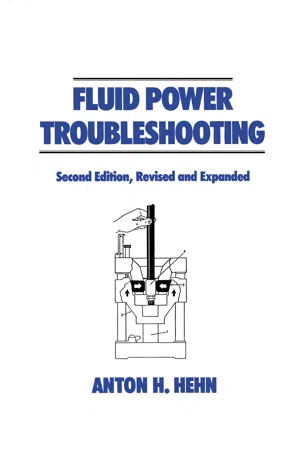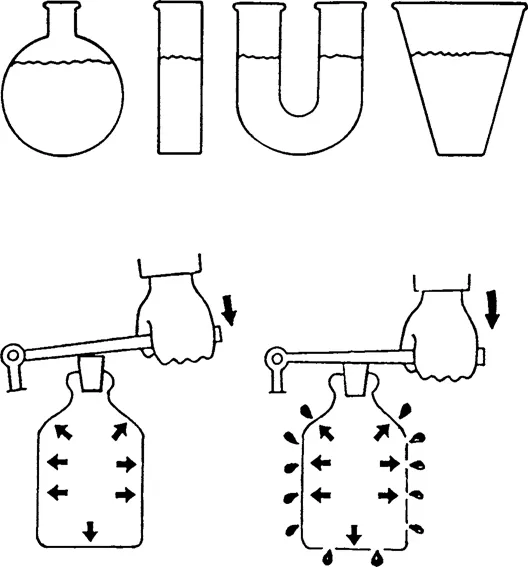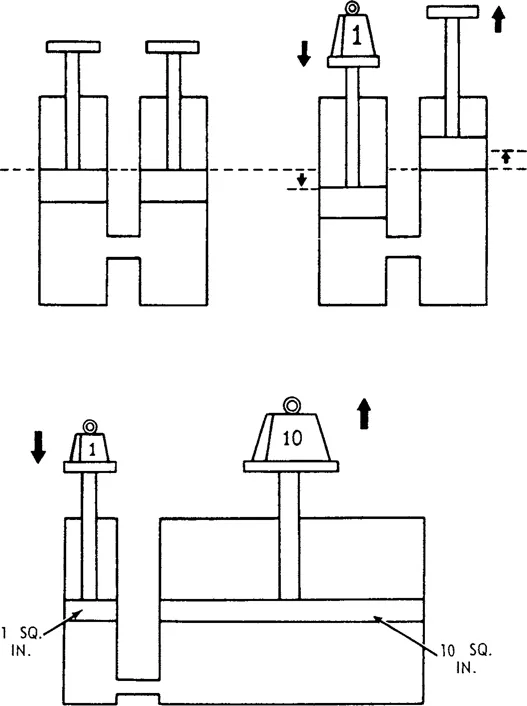
- 664 pages
- English
- ePUB (mobile friendly)
- Available on iOS & Android
eBook - ePub
Fluid Power Troubleshooting, Second Edition,
About this book
Presents practical methods for detecting, diagnosing and correcting fluid power problems within a system. The work details the design, maintenance, and troubleshooting of pneumatic, hydraulic and electrical systems and components. This second edition stresses: developments in understanding the complex interactions of components within a fluid power system; cartridge valve systems, proportional valve and servo-systems, and compressed air drying and filtering; noise reduction and other environmental concerns; and more.;This work should be of interest to mechanical, maintenance, manufacturing, system and machine design, hydraulic, pneumatic, industrial, chemical, electrical and electronics, lubrication, plastics processing, automotive, process control, and power system engineers; manufacturers of hydraulic and pneumatic machinery; systems maintenance personnel; and upper-level undergraduate and graduate students in these disciplines.
Frequently asked questions
Yes, you can cancel anytime from the Subscription tab in your account settings on the Perlego website. Your subscription will stay active until the end of your current billing period. Learn how to cancel your subscription.
No, books cannot be downloaded as external files, such as PDFs, for use outside of Perlego. However, you can download books within the Perlego app for offline reading on mobile or tablet. Learn more here.
Perlego offers two plans: Essential and Complete
- Essential is ideal for learners and professionals who enjoy exploring a wide range of subjects. Access the Essential Library with 800,000+ trusted titles and best-sellers across business, personal growth, and the humanities. Includes unlimited reading time and Standard Read Aloud voice.
- Complete: Perfect for advanced learners and researchers needing full, unrestricted access. Unlock 1.4M+ books across hundreds of subjects, including academic and specialized titles. The Complete Plan also includes advanced features like Premium Read Aloud and Research Assistant.
We are an online textbook subscription service, where you can get access to an entire online library for less than the price of a single book per month. With over 1 million books across 1000+ topics, we’ve got you covered! Learn more here.
Look out for the read-aloud symbol on your next book to see if you can listen to it. The read-aloud tool reads text aloud for you, highlighting the text as it is being read. You can pause it, speed it up and slow it down. Learn more here.
Yes! You can use the Perlego app on both iOS or Android devices to read anytime, anywhere — even offline. Perfect for commutes or when you’re on the go.
Please note we cannot support devices running on iOS 13 and Android 7 or earlier. Learn more about using the app.
Please note we cannot support devices running on iOS 13 and Android 7 or earlier. Learn more about using the app.
Yes, you can access Fluid Power Troubleshooting, Second Edition, by Anton Hehn in PDF and/or ePUB format, as well as other popular books in Physical Sciences & Fluid Mechanics. We have over one million books available in our catalogue for you to explore.
Information
1
Fluid Power Principles:
A Review
1 Hydraulic Principles
Proper use and maintenance of hydraulic systems is dependent on a thorough knowledge of the fluid and of the functions of the mechanical components. To operate and maintain a hydraulic system, people in the industrial field must equip themselves with a knowledge of the basic physical laws of fluid power and should be familiar with the seven basic components of a hydraulic system.
Many hydraulic systems seem exceedingly complicated. However, their basic design is quite simple. Regardless of the complexity or simplicity of a hydraulic system, each system contains seven basic components: (1) a reservoir to hold the fluid supply, (2) connecting lines to transmit the fluid power, (3) a pump to convert input power into fluid power, (4) a pressure control valve to regulate pressure, (5) a directional control valve to control the direction of fluid flow, (6) a flow control device to regulate speed or fluid flow, and (7) an actuator to convert hydraulic power into mechanical motion.
1.1 Basic Laws of Fluids
Although hydraulics is one of the oldest branches of science, it was only in recent years that knowledge of the physical laws of fluids was put to practical use in industry. Ninety years ago it would have been impossible to apply hydraulics as we do today. Machine tools for producing the required precision parts did not exist. Moreover, oil technology had not progressed far enough to produce a satisfactory hydraulic oil.
One reason for the ever-increasing use of hydraulic apparatus is the fact that properly constructed hydraulic systems possess a number of favorable characteristics: (1) they can eliminate complicated mechanisms such as cams, gears, and levers; (2) the liquid used is not subject to breakage as are mechanical parts; (3) the components of a hydraulic system are not subject to great wear; (4) forces can be rapidly generated and transmitted over considerable distances with very little loss and can also be carried up and down and around corners; and (5) hydraulic systems make possible widely variable motions in both rotary and straight-line transmission of power. It should also be noted that the increase in automation in industry has produced a tremendous expansion in the use of hydraulic and electronic equipment.
The fluid most commonly used in hydraulic systems is petroleum-based, although water has found application in a limited number of hydraulic installations. Synthetic fluids and fire-resistant fluids are also used in the hydraulic field, and their use is almost mandatory in operations where fire hazards exist.
The primary functions of a hydraulic fluid are to transmit force and to reproduce quickly any change in direction or magnitude in the force (Fig. 1.1). To accomplish this, the fluid must be relatively incompressible. Liquids possess physical properties which give them the ability to transmit power and multiply force.


Figure 1.1 Basic principles of fluids. (Courtesy of John Deere and Co., Waterloo, Iowa.)
Liquids are nearly incompressible. Even when liquids are subject to extreme pressures of thousands of pounds to the square inch, the volume of change is negligible. The practical significance of this fact is that force can be transmitted undiminished in all directions when the force is applied on one surface of a confined fluid. Pascal discovered this principle in 1620, thus providing the fundamental law underlying the whole science of hydraulics. Pascal’s law states that “pressure exerted on a confined liquid is transmitted undiminished in all directions and acts with equal force on all equal areas.” This means that pressure applied to a liquid at one point will be transmitted to any point reached by the liquid.
Because liquids are incompressible, they possess a distinct advantage in the transmission of power. Pressure exerted on one surface of a confined liquid is transmitted undiminished to other surfaces. However, when a blow is struck on the end of a metal bar, the direction of thrust cannot be altered. The main force of the blow is carried straight through the bar to the other end. This happens because the bar is rigid. In this case, only the use of gears and other complex mechanisms can change the direction of the force.
When a force is applied to a confined liquid, the liquid exhibits the same effect of rigidity as a solid. However, the force is transmitted not only straight through to the other end, but in every direction throughout the confined fluid. The force is transmitted equally forward, backward, and sideways. The pressure of a liquid can be directed around corners. It can be bent back on itself. It can transmit force to any point reached by the confined liquid.
A tremendous force can be effected depending on the difference in the sizes of the areas where the force is applied and where the work is effected. This hydraulic advantage makes it possible for a small force to lift a great weight. The hydraulic jack demonstrates this principle.
Pascal’s law can be used to multiply force since it states that equal force is exerted on equal surfaces. This means that a pressure of 10 lb applied on 1 in.2 of surface would be applied equally to each square inch on all surfaces. Thus a pressure of 10 lb on a 1-in.2 area would act against a 10-in.2 surface with a total force of 100 lb.
Force can be multiplied successfully by the use of hydraulic principles. However, it must be noted that to increase pressure, distance is sacrificed. For example, a 10-in.2 piston will move one-tenth the distance of a 1-in.2 piston. This ratio of pressure and distance is continually employed in various hydraulic components. It is well to remember that when pressure is increased, distance is sacrificed, and vice versa. The basic rule for two pistons in a hydraulic system is that the distances moved are inversely proportional to their areas.
In addition to Pascal’s law, there is another important principle governing the behavior of fluids, Bernoulli’s theorem. It states that “as liquid flows through a restriction it gains speed but loses pressure; as it emerges from the restriction it loses speed but gains pressure.” This is the second important basic law of hydraulics; it deals with fluids that are in motion. There is a proportionate relationship between the cross-sectional area of a passageway and the velocity of flow. In a system, the volume of flow will always be the same through any line. A given volume will pass through a given distance in the same time regardless of the cross-sectional area of the supply lines. The only variable will be a pressure increase or pressure drop.
Some attention must be given to the flow characteristics of fluids in order to understand better the results of these characteristics on hydraulic operations. There are two types of flow in fluid power operations: laminar (or straight line) and turbulent. Laminar flow is a smooth movement of fluid through the system as a result of proper control of fluid velocity and pressure drop. Turbulent or “rough flow’1 is caused by excess velocity, rough internal pipe surfaces, obstructions, excessive pressure drop, and the use of excessive elbows or bends in the piping system.
In addition to laminar and turbulent flow, it is necessary to mention some other factors that directly affect hydraulic fluid performance:
- Specific gravity (or weight of the fluid): This is important when using fire-resistant hydraulic fluids, because some of these fluids are heavier than conventional petroleum-base fluids.
- Atmospheric pressure: This acts on the fluid whenever it is exposed to air (important for suction inlet problems).
- Inertia: Inertia must be considered when moving the fluid from a rest position to motion.
- Friction: Considerable heat is generated merely by the fluid passing the inside wall of a pipe.
- Air entrainment: Since air is compressible, any mixture of air with the hydraulic fluid will affect the compressibility of the fluid, resulting in soft or spongy hydraulic action.
Pressure and Flow
In studying the basic principles of hydraulics, we will be concerned with forces, energy transfer, work, and power. We will relate these to the two fundamental conditions or phenomena that we encounter in a hydraulic system, pressure and flow.
Pressure and flow, of course, are interrelated in considering work, energy, and power. On the other hand, each has its own particular job to do. Pressure is responsible for pushing or exerting a force or torque (see Fig. 1.2). Flow is responsible for making something move, for causing motion.

Figure 1.2 Pressure provides the push.
Pressure is a term used to define how much force is exerted against a specific area. The technical definition of pressure, in fact, is force per unit area.
One effect of pressure is the tendency of a fluid which is being squeezed to expand (or exert resistance to compression). A fluid, by definition, is any liquid or any gas (vapor).
The air that fills an automobile tire is a gas and obeys the laws of fluids. When you inflate a tire, you are squeezing in more air than the tire would like to hold. The air inside the tire resists this squeezing by pushing outward on the casing of the tire. The outward push of the air is pressure.
Equal pressure throughout the area of confinement is a characteristic of any pressurized fluid, whether gas or liquid. The difference is that liquids are only very slightly compressible.
Pressure can be created by squeezing or pushing on a confined fluid only if there is a resistance to flow. There are two ways to push on a fluid: by the action of some sort of mechanical pump or by the force exerte...
Table of contents
- Cover
- Half Title
- Series Page
- Title Page
- Copyright Page
- Foreword
- Preface
- Table of Contents
- 1 Fluid Power Principles: A Review
- 2 Hydraulic Systems: Operation, Maintenance, and Troubleshooting
- 3 Pneumatic Systems: Operation, Maintenance, and Troubleshooting
- 4 Contaminants in a Hydraulic System
- 5 Compressed Air Filtration, Lubrication, and Moisture Control
- 6 Hydrostatic Transmissions
- 7 Temperature Considerations
- 8 Hydraulic System Fluids: Selection and Care
- 9 Fluid Conductors and Connectors
- 10 Seals for Fluid Power Equipment
- 11 Fluid Power Systems: Operation, Maintenance, and Troubleshooting
- 12 Fluid Power System Malfunction Detection and Diagnosis
- 13 Fluid Power System Noise Control
- 14 Electrohydraulic Servo Systems, Proportional Valve Systems, and Load-Sensing Systems
- Appendix A. Fluid Power Symbols and Glossary
- Appendix B. Hydraulic Facts and Technical Data
- Index